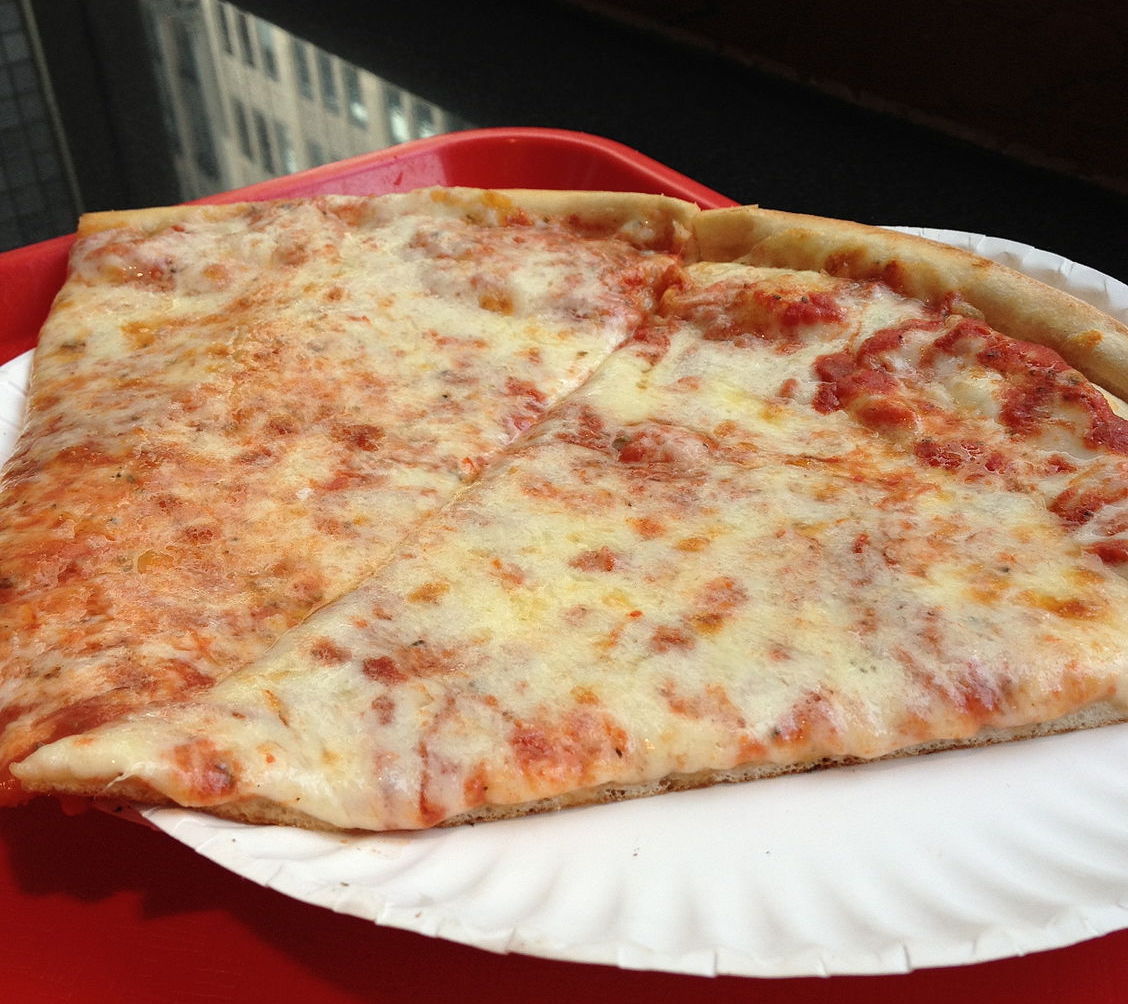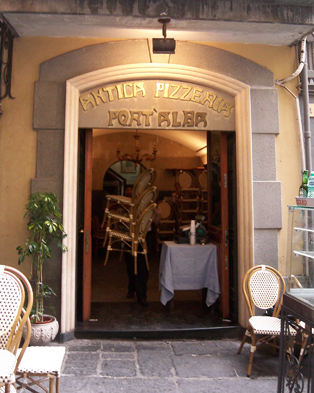Aileen Marshall


Quick, what is the most ubiquitous food you can think of? One that almost everyone around the world knows and loves, even if they have their own style? What is your go-to food to get when you want something quick and satisfying? I think pizza fits that bill. If you live here in New York City, you know that there is a pizza parlor almost every few blocks. How did pizza become such a pervasive and popular food?
Many ancient cultures had some form of flat bread, for example focaccia in Italy, naan and roti in India. The ancient Greeks made a bread called plakous, often topped with herbs, onions, garlic, and cheese. Archeologist have found evidence of baking a flat bread from 7,000 years ago in Sardinia and of pizza-making tools in Pompeii from the first century B.C. There are notations about soldiers in the sixth century B.C. Persia using their shields to bake a flat bread, and then adding cheese and dates on top.
The pizza as we know it today started in Naples, Italy. In the fifteenth century, Naples had a large working-poor population. Pizza, translated as “pie” in Italian, was a flatbread with cheese and olive oil, and sometimes vegetables. It was a popular, cheap, and quick food for these workers. In 1522, tomatoes were first imported from Peru and it was in Naples that pizza makers started adding tomato sauce to the pizza. Being a port city, many sailors and merchants spread word about pizza throughout Europe. In 1830, Antica Pizzeria Port’Alba, what is thought to be the first pizzeria in modern form was established in Naples and is still there today.
Raphael Esposito was a famous pizza maker in Naples in 1889. In June of that year he was commissioned to make some special pizzas for the visit of Queen Margherita of Italy. One pizza he made was covered with tomato, mozzarella, and basil, to mimic the colors of the Italian flag. Queen Margherita declared that version her favorite. Afterwards, people started calling that type of pizza “margherita style.”
Pizza first appeared in the U.S. in the 1800s, mostly among Italian immigrants. It surged in popularity after World War II, as many soldiers who had been stationed in Italy came home and raved about pizza. There is some contention as to which was the first pizzeria in the U.S. In 1897, Gennaro Lombardi opened a grocery store on Spring Street here in New York City that evolved into a pizzeria, receiving a city-issued commercial license to sell pizza in 1905. Brothers Gennero and Giovani Bruno opened a pizzeria on the Loop in Chicago in 1903 that some claim to be the first U.S. pizzeria. Totonno’s Pizzeria of Coney Island was started by a former Lombardi employee in 1924 where he sold slices for a nickel.
Several factors helped drive the surge in the popularity of pizza in the mid-1900s. Several chain restaurants started in the forties and fifties, such as Pizzeria Uno, Pizza Hut, Little Caesars, and Papa John’s. The advent of frozen pizza, invented by the Celentano brothers in the 1960s, was another factor. Finally, the delivery of pizza to homes also became popular during the 1960s. The U.S. Army’s military intelligence unit reportedly used pizza deliveries to spy on politicians and reporters in that decade, according to a report issued by the City University of New York.
New York-style pizza is traditionally an eighteen-inch wide pie made in a coal oven, although many places use a gas oven today, and is known for its crispy crust and foldable slices. A “regular” slice has only tomato sauce and cheese. Some say it is the New York City tap water, used in making the glutinous dough that gives it that great, distinctive taste.
Other cities are known for their own unique style of pizza. Perhaps the most famous is Chicago, known for its deep dish pizza. The format, started by Pizzeria Uno, has high edges and uses chunky tomato sauce. In California, pizza is usually a personal sized pie that is topped with local vegetables and avocado. In St. Louis, the crust is made with a yeast-free dough and topped with processed cheese product that is a combination of cheddar, swiss, and provolone. Washington D.C., is known for its jumbo slices that can be more than a foot long and need to be served on two paper plates.
Has all this reading about the history of pizza made you hungry? The author admits to having pizza twice during the writing of this article. Luckily, in this city, there is always a neighborhood pizza parlor. In the Rockefeller area, while we have lost Sutton Pizza, there is still the popular Pizza Park on First Avenue., near 66th Street as well as Famous Ray’s on Lexington Avenue and 63rd Street. What is your favorite pizza joint in the city? Next time you are there, remember the famous quote from Yogi Berra when a pizza maker asked if he wanted his pie cut into eight slices: “Better make it four, I don’t think I could eat eight.”
